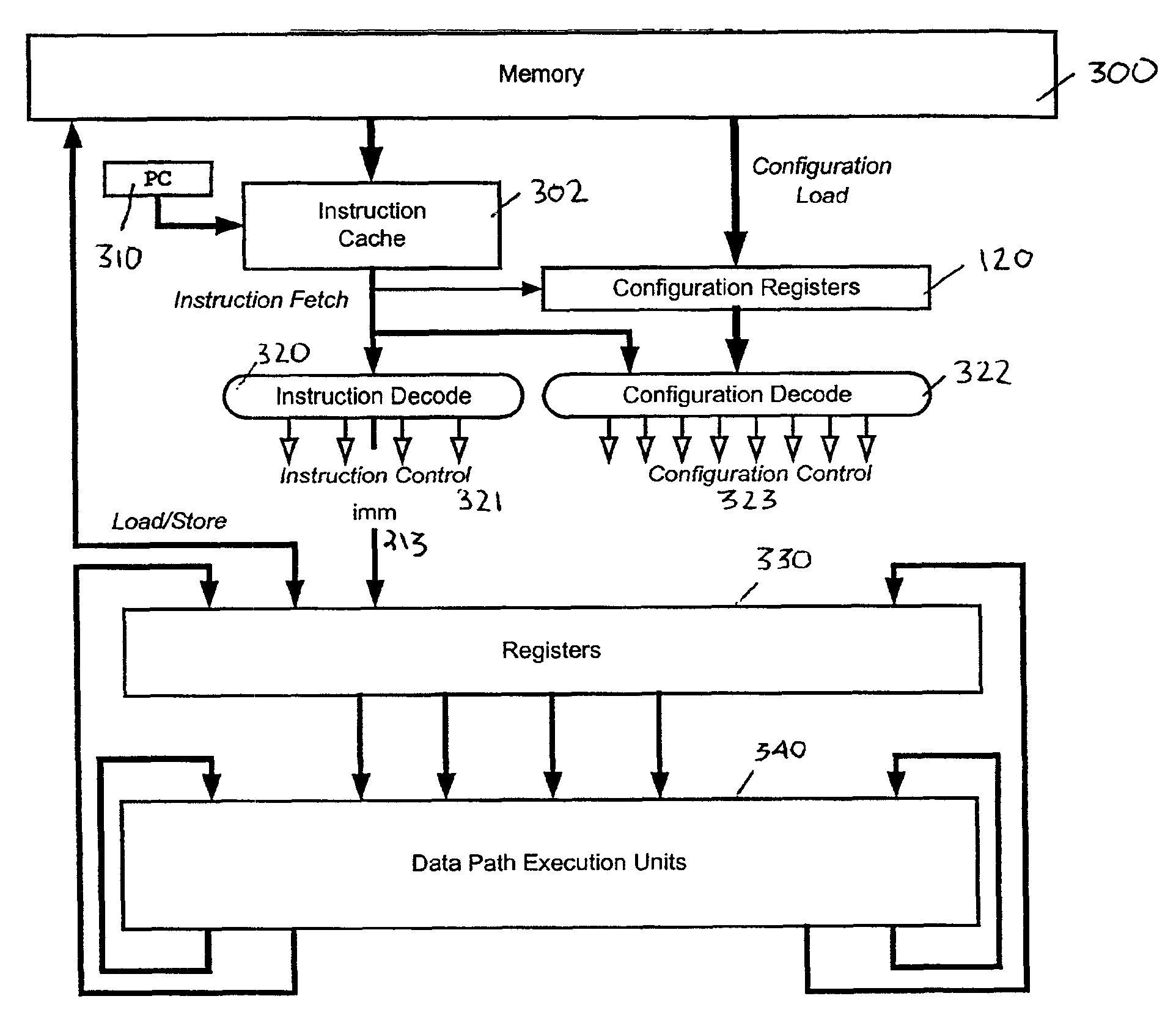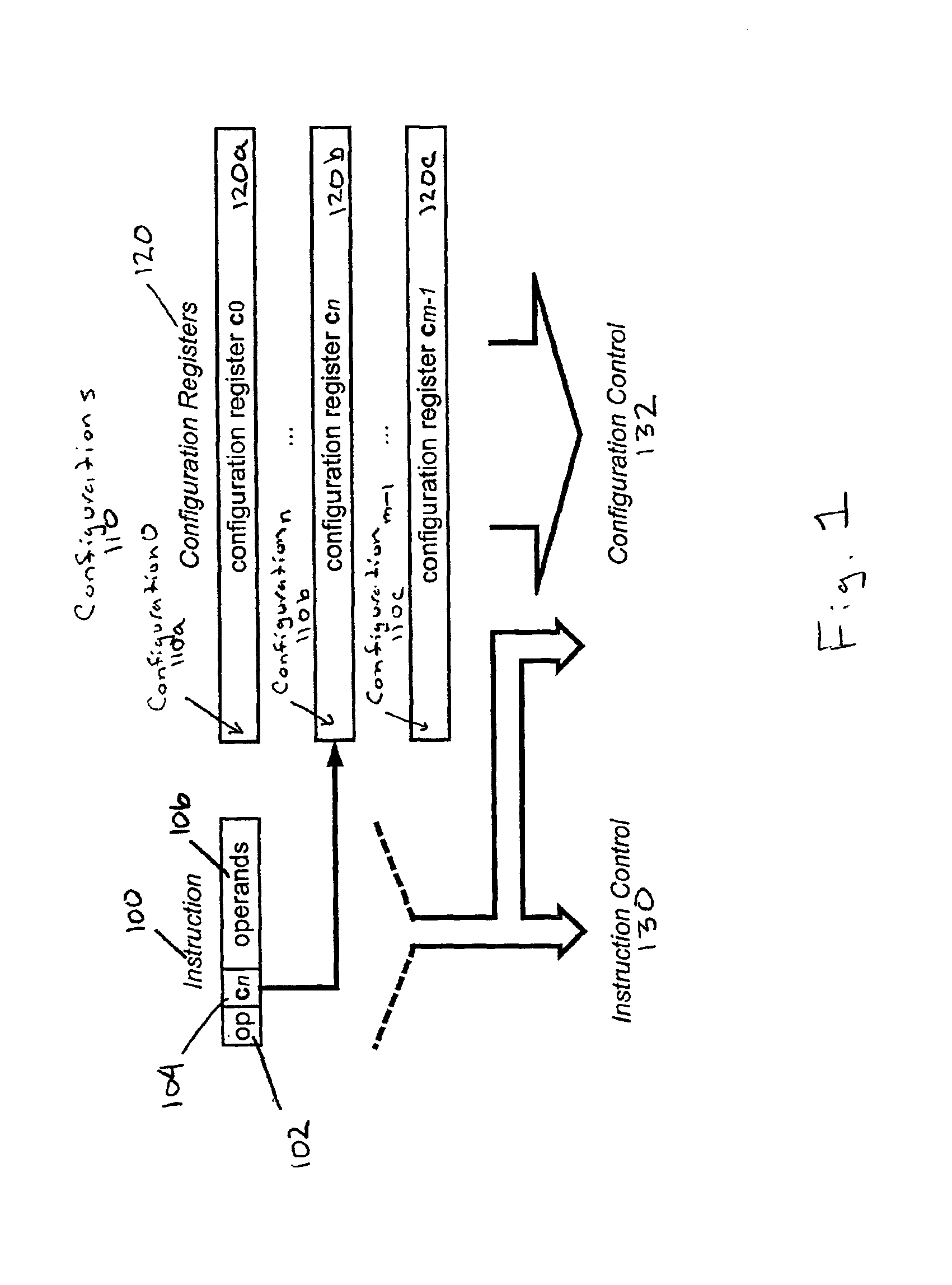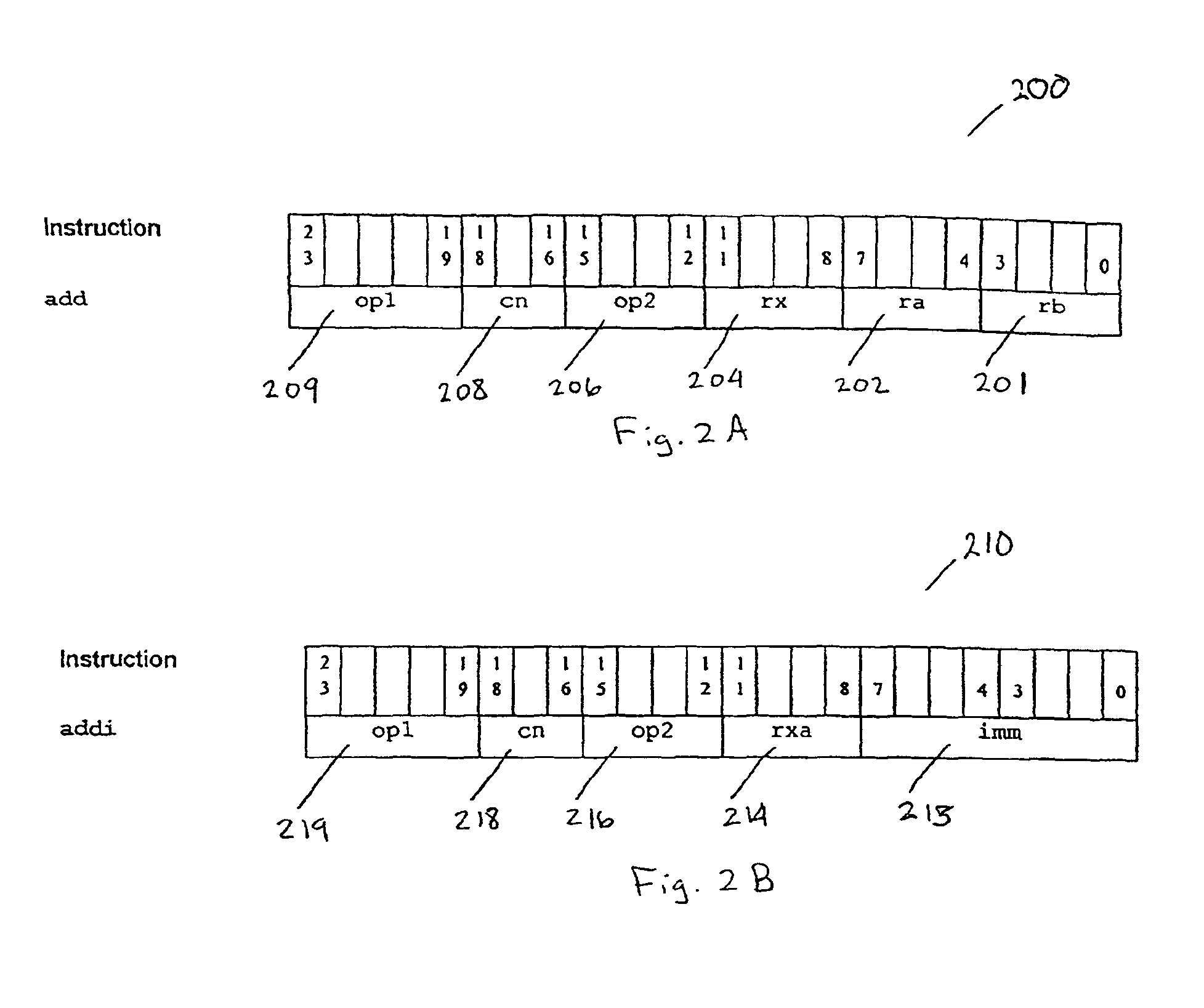Reconfigurable processing system and method
a processing system and reconfigurable technology, applied in the field of reconfigurable processing system, can solve the problems of limited parallelism of scalar processor, limited number of pipeline stages, and one execution unit used during each clock cycl
- Summary
- Abstract
- Description
- Claims
- Application Information
AI Technical Summary
Benefits of technology
Problems solved by technology
Method used
Image
Examples
Embodiment Construction
[0030]Referring to FIG. 1, the reconfigurable processor executes an instruction 100 and a selected configuration or configuration context 110a-c (generally configuration 110) stored in a selected configuration register 120a-c (generally configuration register 120). Configurations 110 are loaded into one or more configuration registers 120 from a memory. For example, a compiler or programmer defines the configuration 110 in memory using, for example, assembler syntax. Examples of two configurations 110 in assembler syntax are provided below:
[0031]
cfg_addr1: .config add r0, r0, r1 ∥ mul r1, r2.lo, r3.locfg_addr2: .config add r0, r0, r1 ∥ mul r1, r2.hi, r3.hi
The example configurations 110 specify a multiply-accumulate operation on two arrays. A multiplier product r1 is added to a value in accumulator register r0. Additionally, in parallel with the add operations, two array elements, r2 and r3, are multiplied together into r1. The “lo” and “hi” designations refer to a “lo” 16 bits or a ...
PUM
 Login to View More
Login to View More Abstract
Description
Claims
Application Information
 Login to View More
Login to View More - R&D
- Intellectual Property
- Life Sciences
- Materials
- Tech Scout
- Unparalleled Data Quality
- Higher Quality Content
- 60% Fewer Hallucinations
Browse by: Latest US Patents, China's latest patents, Technical Efficacy Thesaurus, Application Domain, Technology Topic, Popular Technical Reports.
© 2025 PatSnap. All rights reserved.Legal|Privacy policy|Modern Slavery Act Transparency Statement|Sitemap|About US| Contact US: help@patsnap.com



